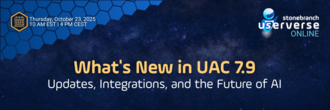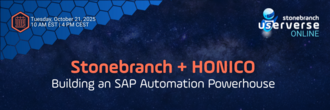Success Story
Estabanell Energia: Data Pipeline Orchestration that Energizes Sustainability and Profitability
Estabanell, an energy and telecommunications provider, uses Universal Automation Center to automate its data pipelines and cloud automation processes, resulting in improved profitability, reduced costs, and increased agility.
Background
Estabanell Energia is a leading Spanish energy and telecommunications company with a long history of innovation. Founded in the early 1900s, the company pioneered the use of hydroelectric power and is now at the forefront of fiber optics and telecommunications as well.
As an energy distributor, Estabanell is dedicated to sustainability, generating 100% renewable and responsible electric energy from sources such as photo-voltaic and micro-hydro power.
Estabanell is based in Catalonia but has plans to innovate and expand throughout Spain. Scalable automation is critical to the success of their future development.
Challenges
Estabanell requires a sophisticated data pipeline that serves the real-time energy and telecommunications needs of more than 56,000 customers in Catalonia... and beyond.
To stay ahead in an industry that’s rapidly innovating and advancing, Estabanell needed to:
- Modernize its IT infrastructure to support its growing business
- Improve the efficiency and accuracy of its data management processes
- Reduce costs and increase agility in order to compete in a rapidly changing market
- Implement scalable IT automation solutions that can grow with the company
“UAC has been a gamechanger for our team. It’s a powerful automation platform that has allowed us to transform our IT operations and focus on more strategic goals. Ultimately, UAC helps be more responsive to our customers’ needs.”
The Solution
Estabanell has been using Stonebranch Universal Automation Center (UAC) for three years. In that time, the company has expanded beyond traditional IT operations automation to data pipeline orchestration.
Estabanell uses UAC to improve its profitability by automating its energy data streams so the company can make informed buy/sell decisions in wholesale energy markets.
Estabanell collects real-time data from a variety of sources, including its own energy market operations, customer energy usage, and weather data. This data is then applied to advanced algorithms that predict how much energy the company needs to:
- Balance same-day supply and demand in the intraday market
- Make short-term decisions in the day-ahead market
- Anticipate long-term trends in the futures market
By effectively automating their energy data pipelines, Estabanell can process and analyze more data, more efficiently. This allows them to make better decisions about its energy market trades. Ultimately, these data-informed decisions have the power to save Estabanell a significant amount of money.
The Estabanell IT Ops team uses the Stonebranch software development toolkit (SDK) to easily build their own integrations between UAC and AWS Glue, Bitbucket, and Microsoft SharePoint. They also use UAC workflows to kickoff data exports from Talend, their ETL (extract, transform, load) solution, to Bitbucket.
“I’ve been working with UAC for over three years now, and I’m still impressed by its capabilities. I highly recommend Stonebranch to any organization that wants to improve their efficiency and agility.”
The Results
Estabanell’s success demonstrates the power of UAC to help companies orchestrate their data pipelines to improve profitability, reduce costs, and increase agility.
In the near future, the Estabanell IT Ops team plans to expand their use of UAC even further to provide self-service automation, cloud automation, and MLOps pipeline orchestration. And when the company is ready to expand into new regions, UAC and the IT Ops team will be ready to scale and support their growth.
Start Your Automation Initiative Now
Schedule a Live Demo with a Stonebranch Solution Expert





